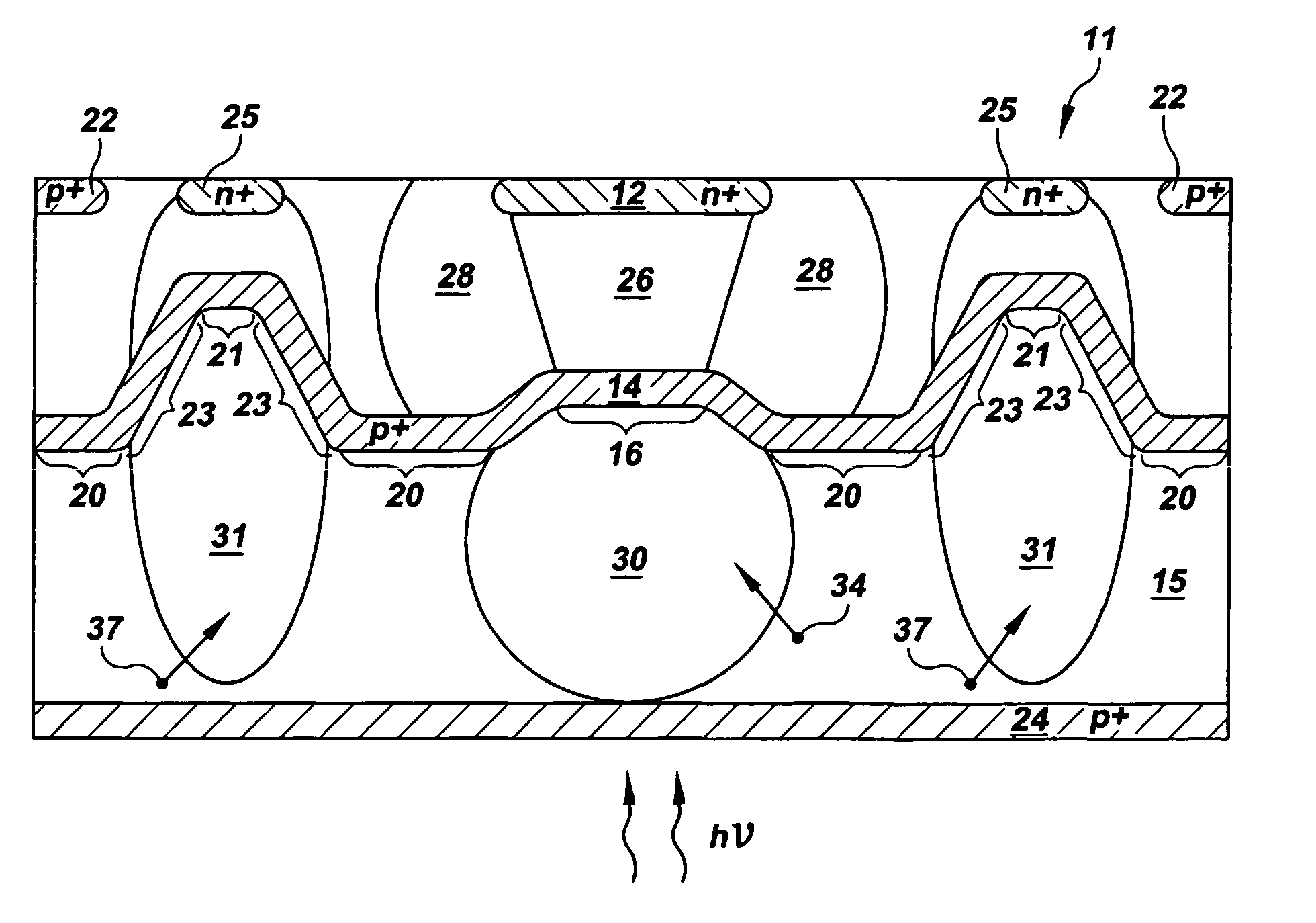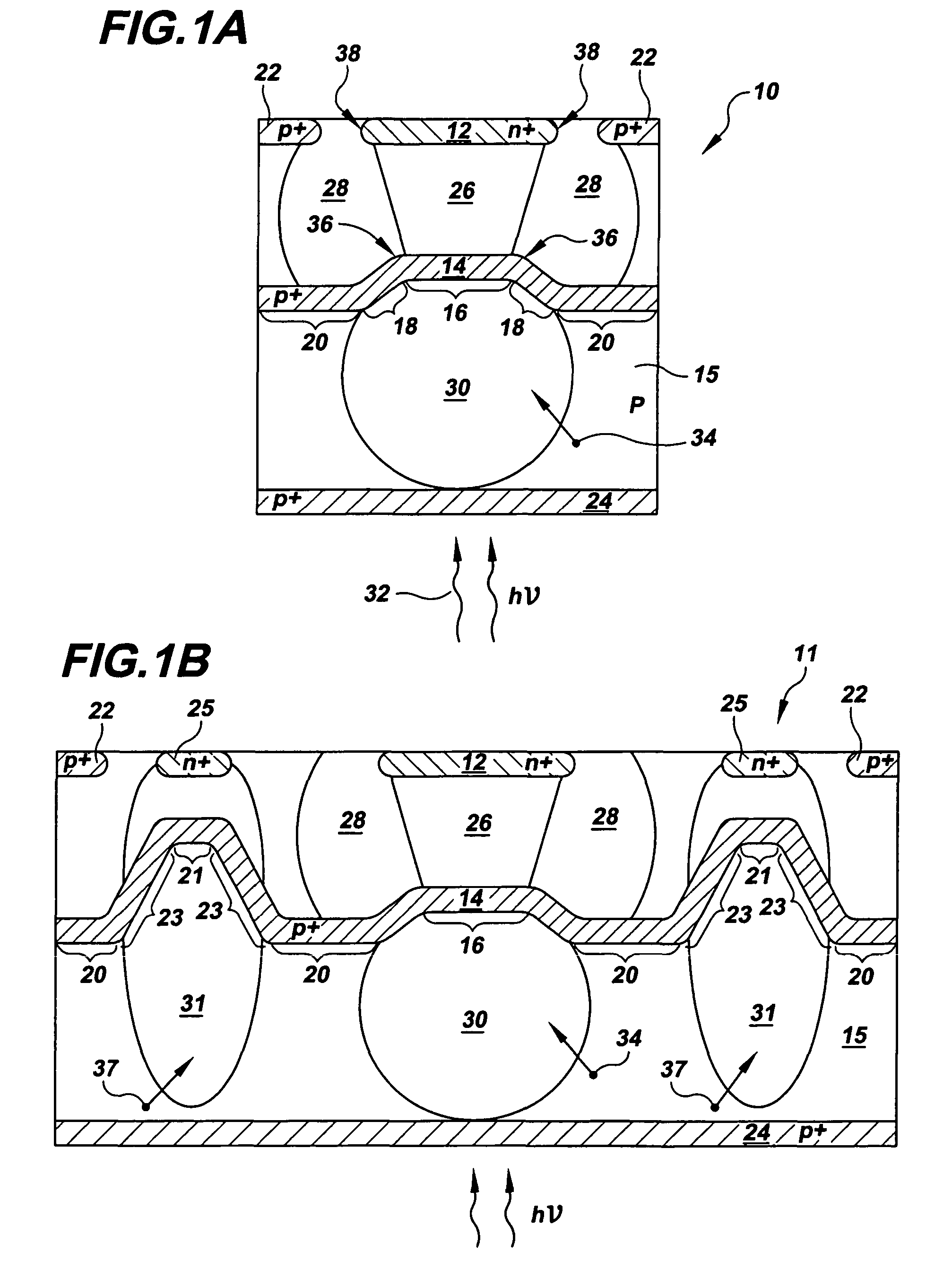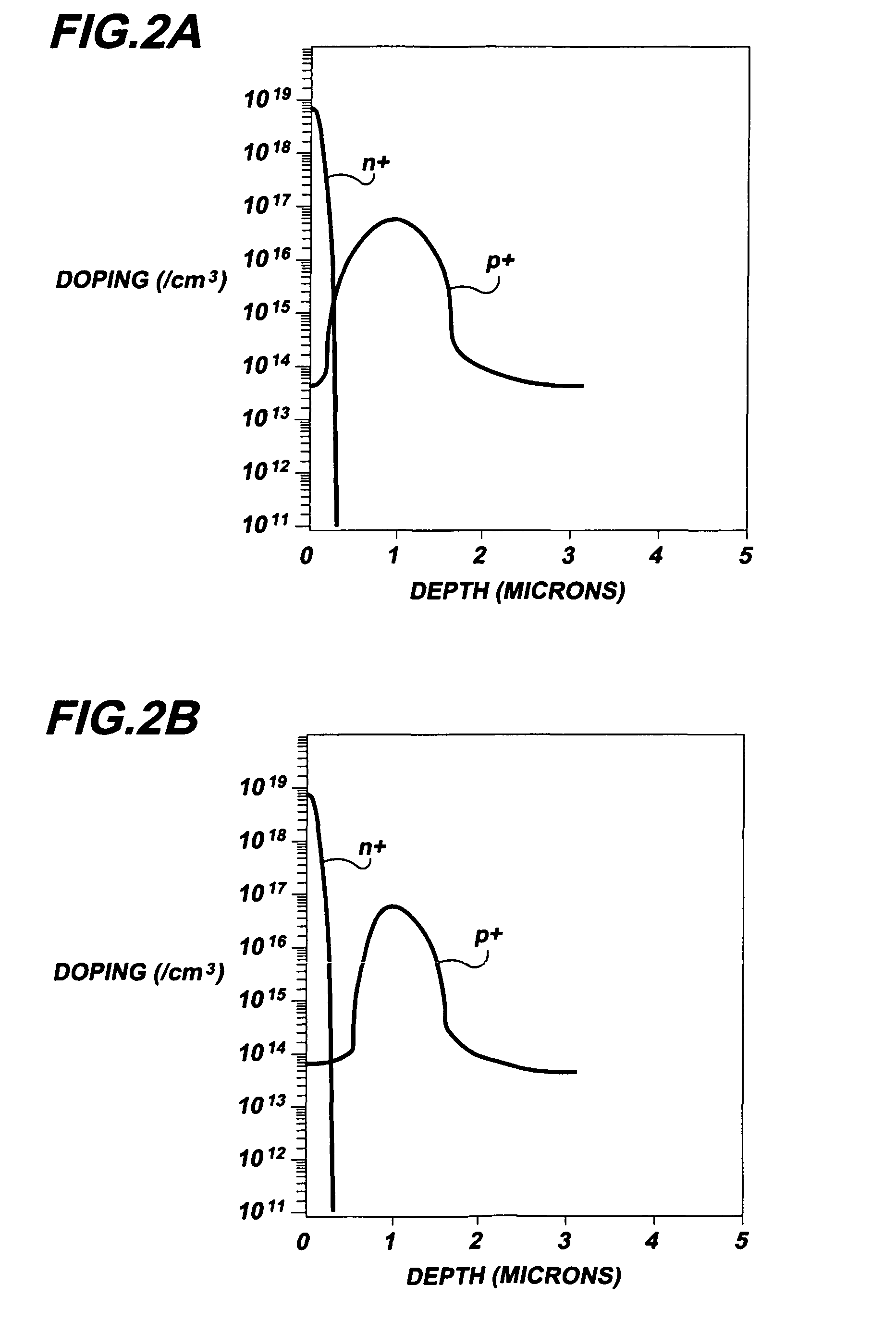High fill-factor avalanche photodiode
a photodiode and high filling technology, applied in the field of solid-state photodiodes, can solve the problems of multiplication noise, which is progressively worse, and the signal noise typically associated with linear mode apd operation can be unacceptable for some applications
- Summary
- Abstract
- Description
- Claims
- Application Information
AI Technical Summary
Benefits of technology
Problems solved by technology
Method used
Image
Examples
example
[0073]The avalanche photodiode doping and electric field profile provided by the invention and shown in FIG. 1A were simulated using the Athena and ATLAS simulation tools described above. Reverse bias breakdown and junction punch-through voltages were estimated for the structure to determine an optimum p+ buried layer ion implantation dose and energy given a 5 V cathode voltage range. Based on initial estimates, the depth of the central, elevated high-field zone 16 of the buried layer 14 from the front surface was set at about 0.6 μm. This high-field zone depth corresponds to an APD breakdown voltage of about 30 V with negligible tunneling currents.
[0074]The simulations further specified a buried layer boron ion implantation dose of about 2.8×1012 cm−2 and energy of about 675 KeV, and a tapered oxide region thickness of 500 nm through which the implantation was carried out. These implantation conditions result in good avalanche initiation probability and collection efficiency in the...
PUM
 Login to View More
Login to View More Abstract
Description
Claims
Application Information
 Login to View More
Login to View More - R&D
- Intellectual Property
- Life Sciences
- Materials
- Tech Scout
- Unparalleled Data Quality
- Higher Quality Content
- 60% Fewer Hallucinations
Browse by: Latest US Patents, China's latest patents, Technical Efficacy Thesaurus, Application Domain, Technology Topic, Popular Technical Reports.
© 2025 PatSnap. All rights reserved.Legal|Privacy policy|Modern Slavery Act Transparency Statement|Sitemap|About US| Contact US: help@patsnap.com



